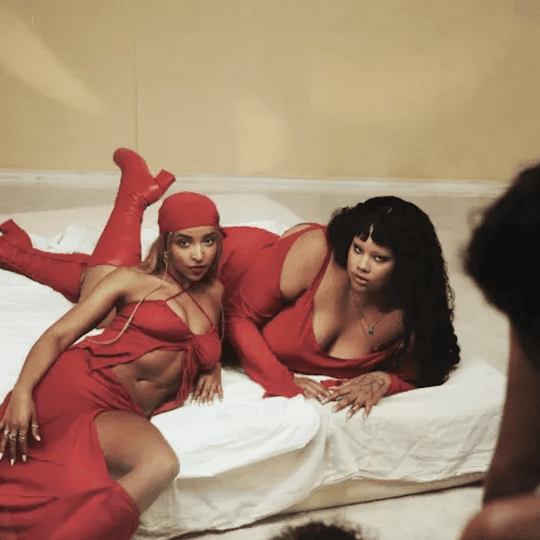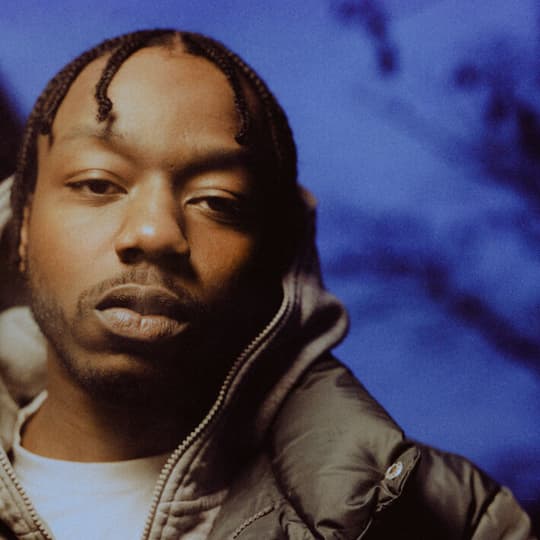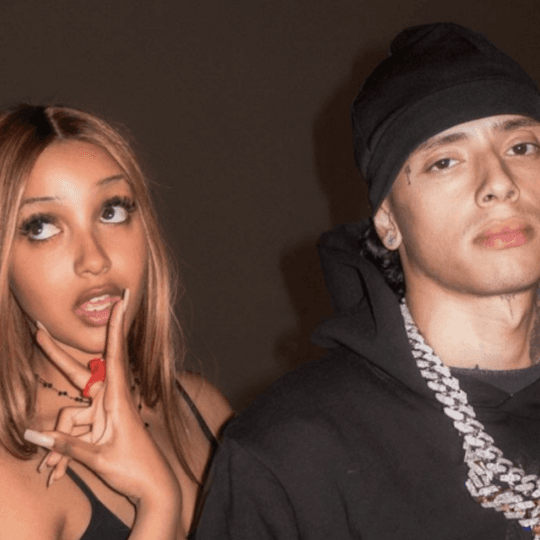How electronic dance music shapes and shifts our ideas of beauty
Whether slowly over decades and centuries or across geographical or social boundaries, musical culture has always been divided by opposing ideas of what is conventionally beautiful and what is appealingly ugly, along with where and how each should be applied. Beauty is often held to represent peace, perfection, happiness, morality and intelligence, while ugliness (where considered desirable) can stand for subversion, strength, imagination, struggle and the uncomfortable truth. Yet it’s far from clear where one begins and the other ends, or whether one or the other truly applies in a given instance. Nowhere are the tensions and running battles between these concepts more richly expressed than in that powerhouse of invention among competing tribes, electronic dance music.
Musical culture has always been divided by opposing ideas of what is conventionally beautiful and what is appealingly ugly.
The oxymoron in the title of Scratcha DVA’s debut album ‘Pretty Ugly’ might provoke little more than a minor grunt of bemusement at first, but it does neatly sum up these tensions as they apply to electronic dance music aesthetics today. It’s a reminder of the old truisms that prettiness is in the eye of the beholder, that today’s ugly is tomorrow’s pretty. ‘Pretty’, we might note, is one of those strange words that can mean both ‘a little’ and ‘a lot’, depending on the inflection of the voice using it. DVA’s mischievously pithy appeal to such basic, age-old ambiguities is reflected in many different ways on the album, and as such addresses a very contemporary dilemma in UK dance music.
Nowhere are the tensions between these concepts more richly expressed than in that powerhouse of invention among competing tribes, electronic dance music.
How do we like our electronic dance music? asks Scratcha. Pretty, or less conventionally attractive? Both sides have been making their arguments in recent years, but the debate stretches back much farther. In the early 1990s, the sophisticated sheen of progressive house was a reaction to the banging, drug-guzzling mayhem of ‘ardkore, while later in the decade, the sleeker joys of UK garage replaced the deepening, sublime menace of drum and bass. Things swung the other way with the birth of grime, where stark, dissonant synths became the vehicle for a depiction of street sentiment that was anything but pretty. As dubstep also rushed onto the dancefloors, many of those who preferred a more sympathetic and jovial party vibe ushered in the warm grooves of UK funky.
But it’s more complicated than mapping ‘pretty’ and ‘ugly’ onto famous dance styles of recent memory, of course. Hyperdub, the label releasing ‘Pretty Ugly’, has been a key arena for this debate in ways that can’t be reduced to genre. Often in alliance with classic dubstep but never releasing anything with the style’s traditional template, in 2008 Hyperdub followed Burial’s ‘Untrue’ – a modern classic of fallen beauty – with a bizarre and heterogeneous new form of ugliness that was never ultimately given a name. The series of warped, angular singles and EPs from Ikonika, Zomby, Samiyam, Joker and Quarta 330 made a virtue of their brutalist synths and lumbering rhythms. Things then became more complicated on the label when UK funky and new forms of house started to rise, and much of the strangeness was curled up quietly inside elegant grooves such as LD’s Traumatic Times / Woodblock, Cooly G’s Love Dub and Kyle Hall’s Kaychunk / You Know What I Feel. But it was at this time that DVA’s Natty / Ganja appeared on the label, extrapolating the predilection of the usually genial funky for exotic percussion and sliding synths into a bizarrely, unashamedly and humorously embarrassing dancefloor creature.
In the past year however, these stranger inclinations of UK dance music have subsided across the board in favour of a smoother ride through house or techno pastures, possibly as a negative reaction to the gurning extremity of wobble-merchants like Skrillex. Even artists like Zomby and Joker seem to have tamed themselves on their new albums, with the former’s 2008 Aquafresh and the latter’s 2008 Gully Brook Lane / Retro Racer sounding shockingly bold in comparison. Meanwhile, flashbacks of nice old house, at varying percentages of pastiche, seem to be everywhere, whether inside the dedicated secondhand vintage scene associated more with underground pop than with dance heads (like the 100% Silk label) or not (Lone, L-Vis 1990, Jacques Greene, Scuba).
Yet the freaks and the monsters are starting to bang on its walls once again. Goofy underground sounds like ‘Bubblin’ Dutch House or New Jersey Club have been brought to our attention and are trickling into the backing beats of high-profile rappers like Azealia Banks and Nicki Minaj, whose pop milieu, still ruled by Lady Gaga aesthetics, is hardly a tribute to classical beauty. Dark, dingy, rough and strange vibes are coursing through techno in and around Berlin with the recent success of acts like Andy Stott and the Sandwell District Label. The highly acclaimed Objekt is one of the increasingly rare producers who still demonstrate to the UK’s sophisticated underground that the unfamiliar, the peculiar and the misshapen can be supremely beautiful and not just gleefully absurd.
‘Pretty Ugly’ mixes the ugly and the classically pretty until they become unstable and indistinguishable, positioning both on the same puzzling continuum.
When I first heard the single released ahead of ‘Pretty Ugly’ (Madness / Polyphonic Dreams) I was pleased to see its return, at the heart of the UK scene, to the bold ugliness of Hyperdub and co. circa 2008. But coming from Scratcha DVA, I wasn’t entirely surprised. His releases on his own label DVA Music in 2009 and 2010 (‘The Jelly Roll’ EP, ‘The New World Order’ EP) had nurtured a form of fun-loving synth-flavoured funky that connected him to the artists of the Night Slugs label that flourished in 2010. This confidence and clownishness also made Scratcha very popular on the Grimey Breakfast Show, his recently-vacated morning slot on the former pirate radio station Rinse FM. Yet ‘Pretty Ugly’s achievement doesn’t end with bringing the inventively ugly back to the table. Bit by bit, it mixes the ugly and the classically pretty until they become unstable and indistinguishable, positioning both on the same puzzling continuum.
Some tracks lean more closely to the ugly end of the scale, loud and proud of their weirdness. Polyphonic Dreams is ruled over by a rainbow-coloured, dissonantly-segmented centipede that hoots as it constantly ducks and dives up and down, weaving in and out of the insistent drum machine until synths that seem to come from an entirely different track roughly force their way in. Bare Fuzz begins with everyday funky vocal interjections but descends into a flurry of swishing and bouncing synths, a chaos that isn’t helped by the widely distributed and violently syncopated percussion. These moments sit alongside Bubblin’ and the weirder corners of Night Slugs in finding a form of creative ugliness that doesn’t require the cumbersome tectonic gurgle of whoever is still proudly applying the term ‘dubstep’ to themselves.
But other tracks on ‘Pretty Ugly’ are sweeter on the ear, as if representing the recent shift back towards a smoother beauty. There are often moments reminiscent of Velour, two of the cooler heads on the Night Slugs roster. Among them, Eye Know features the silken-soft soul vocals of Natalie Maddix turned towards the gently raining sky as the ground becomes a soft cushion of sine-tones. The laid-back, lilting shuffle of The Big 5ive, with its rich crystal synths, is like reclining on a Hawaiian beach, facing a computerised electric blue sea – and yet the ever-contradictory DVA had begun the track with vinyl distortion and nonsensically rushing synths.
Because the spirit of the album is in the stark opposition between its conventional R&B or soul vocals and their mischievously misshapen backing, and especially in the places where they coexist. A hefty seven out of ‘Pretty Ugly’s twelve tracks feature leading vocals, yet these combinations of typical song with DVA’s inventive and frankly challenging beats aren’t always quick to convince. Often they both lose out as they compete for the listeners’ attention, as we decide whether to scrutinise the peculiarities of the riddim while trying to ignore the vocals, or whether to follow the melodious lyrics without being tripped up by the accompaniment. Thankfully a more integrated approach becomes a little easier with each listen. Paradoxically, then, an album that’s initially so brazen takes time to yield its secrets – the prom queen or king is eventually revealed behind the geeky glasses.
We owe it to ourselves to bend and break these rules as the preconditions for an active imagination and a sympathetic society.
Having used such a metaphor (and having appended ‘king’), it should also be noted that these concepts of ‘pretty’ and ‘ugly’ can be crudely mapped onto gender binaries by the dance scene. The story goes that the girls bring the pretty and the boys bring an ugly that is by turns awkwardly, geekily and violently masculine. Hence UK garage and UK funky are pretty and thus gendered feminine, ostensibly because their opposite numbers drum and bass and dubstep were attracting too many sullen boys and sinister sounds to the dancefloor. Needless to say, these are not smart observations of inherent gender characteristics but reconstructions and perpetuations of ancient stereotypes in which neither sex comes out well. In nineteenth-century classical music, beauty was desirable but gendered feminine while the sublime, the passionate and the revolutionary were heavily gendered masculine – hence Beethoven is constantly characterised as manly while Schubert and Chopin are frequently painted as effeminate. It’s not much different in electronic dance music culture, and exceptions to these rules – particularly among the fans themselves, androgyny frequently being more acceptable from the (albeit male) producer – are often treated negatively, as unnatural. I hardly need to point out that the rules governing what is masculine and what is feminine can be just as fluid and changeable as those governing what is pretty and what is ugly. In fact, we owe it to ourselves to bend and break these rules as the preconditions for an active imagination and a sympathetic society.
Overall, ‘Pretty Ugly’ is a pretty provocative attempt to deface the orthodoxies of today’s dance music in order to glimpse a more imaginative approach to beauty without ever enshrining it.
It’s true that the female vocalists on ‘Pretty Ugly’ only barely get as ugly as does the backing (which we may infer signifies the male Scratcha), either in the shape of their melodies or in the tone of their voices, and that they’re absent from the crazier instrumentals. But there’s also the occasional male vocalist doing the same, and the mixture of pretty and ugly on the album is regularly more of an enlightening fusion than a divisive differentiation. The title track stands for the whole of the album not just in name but in being the finest-grained mixture of the pretty and the ugly. Its glistening synth chords sweep up and down to bizarre extremes of pitch, reaching unexpected new heights as they carry the vocals of Cornelia along, driven by a beat that always seems on the point of blissful arrival but never (thankfully) gets there. Overall, ‘Pretty Ugly’ is a pretty provocative attempt to deface the orthodoxies of today’s dance music in order to glimpse a more imaginative approach to beauty without ever enshrining it.
But it might also beg the question: is aesthetic ambiguity desirable or are distinct and opposing ideologies more fun? Perhaps you believe that some musics simply aren’t pretty, or ugly, in any context. This is part of the fun of following musical fashions, but with such a rich and mixed-up dance scene right now, this particular tug of war is becoming less and less obvious. Perhaps electronic dance music’s internal tensions should really become more specific, as they have been in the past – say, between ‘fast’ and ‘slow’, between ‘bass’ and ‘mid-range’, between samples and synths, between ‘minimal’ and ‘maximal’, between acoustic percussion and electronic percussion, or between terms we haven’t even invented yet. And perhaps the only tension we should consider truly fighting for, and in specific and detailed ways, is not the traditional one between beauty and ugliness, but one between the familiar same-old and the new and different. I know which side I’d be on.
Hyperdub released DVA’s ‘Pretty Ugly’ on 19th March 2012
Adam Harper runs Rouge’s Foam music blog. His book Infinite Music: Imagining the Next Millennium of Human Music-Making is out now













